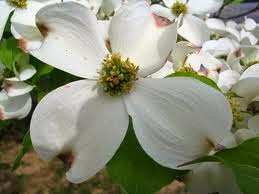 |
| Old Fort Williams grave site, 2005, prior to removal |
I’ve always loved tromping around
old cemeteries, pausing to read each tombstone. In the early ’90s, on a walk
through the woods near Lay Lake in central Alabama, I came across a cluster of
tombstones with a monument in the middle. When I read the inscriptions I was surprised
to learn that the cemetery was the final resting place for U.S. soldiers - from
1814. During the War of 1812 (1812-1815), General Andrew Jackson and his troops
were passing through the area on their way to fight “the bloody British in the
town of New Orleans” (you know the song) when they encountered a band of Red
Stick Creek warriors. The Battle of Horseshoe Bend was fought on March 27th,
and Jackson’s dead were buried at a fort long since submerged under the lake
created when the Coosa River was dammed in 1914. I’ve read that in the years
since I happened upon the site, the land has been turned into a subdivision and
the grave markers moved. But on that summer day when I was there, the old trees
and I looked down on the actual spot where soldiers had dug in the dirt to bury
their fallen comrades over 175 years prior. I imagined what the young men (for
they were all young, too young) looked like. Scenes of them creeping through
the forest, crouching behind trees, firing their guns, giving up their lives,
played before my eyes. Their graves whispered their stories to me.
 |
| Vicksburg National Cemetery |
Being a historian, I love all things
old – the older the better. And a cemetery, especially an old one, is a glimpse
not only into the past but into the lives of those who’ve gone before us. I’ve
driven through the national cemetery at Vicksburg, Mississippi, encompassing over
18,000 graves including the nation’s largest burial site of Union soldiers and
sailors - over 17,000 of them, and I’ve mourned for a generation of young men who
fought and died over a lost cause.
I’ve walked through a tiny church’s cemetery
in Gatlinburg, Tennessee, smiled over bouquets of plastic flowers blooming from
carefully tended plots, teared-up over the graves of little children marked
with statues of angels, and thought of the families who laid their bodies to
rest there.
 |
| A common sight: an angel surrounded with plastic flowers |
I’ve
stood in St. Peter’s Anglican Church’s cemetery in St. George’s, Bermuda,
peered at the barely decipherable words on graves from the 1600s, and wondered
at the bravery of men and women who traveled months across an ocean to a wild,
new world.
 |
| St. Peter's Church graveyard |
I’ve strolled around Fairview Cemetery in League
City, Texas, gazed at the Japanese inscriptions on the markers of the immigrants
who brought rice farming to the area in the early 20th century, and
imagined what life was like for people who left their country behind, learned a new language, and assimilated into a foreign culture.
 |
| Fairview Cemetery tombstone of a Japanese settler in League City, Texas |
And I’ve searched
fruitlessly among the graves in Lakeview Cemetery on Galveston Island, Texas
for my grandmother’s brother who left Alabama looking for work and never
returned.
 |
| Lakeview Cemetery |
I won’t give up my search for my great-uncle's grave,
because for Southerners it’s vitally important to know both who your kin are and where
your kin are. And it is equally important to know who your kin were - all the ancestors and relations
who have passed on to their eternal reward. And that knowledge must include
information on their burial spots. We want to not only record them in our
family tree but put photographs of their tombstones in our family albums.
 |
| My great-great grandfather's tombstone. My son is his namesake. |
Southern
veneration of the dead includes naming our little ones after our dearly
departed ancestors, passing down family heirlooms along with family lore, and
taking rubbings of the inscriptions on the grave markers. And then there is the
traditional holiday graveside picnic.
My
Mama recalls going to Elmwood Cemetery in Birmingham, Alabama every Easter
after church. Sporting crisp, new outfits and shiny, new shoes, Mama and
her cousins carried Easter baskets filled with
sweet treats. The adults brought picnic baskets, and they would spread their bounty next to the
grave of my great-grandmother. Now that may seem like a morbid way to dine – an
odd way to spend an afternoon amongst the dead and decaying on a holiday
celebrating resurrection at the time of year when everything is fresh and new,
blooming and budding. But Southerners, especially, know that the dead aren’t
confined to the boxes buried in the dirt. Those are just the places we go to
honor them. The tombstones are monuments to lives – some lived well, some
wasted, some ended too soon, some lasting too long. But all the graves speak,
and if we listen, we hear their stories.
The trend now seems to be cremation.
My grandmother was cremated. We scattered most of her ashes at a monument in our hometown at the top of a mountain and kept some in a jar on our fireplace
mantle. But I think I want to be buried (not any time soon, mind you) in a
cemetery, settled under a tree which will spread its canopy over my remains and
wrap its roots around them. And one day, my descendants can find my tombstone
there, read my name, note the dates book-ending my life on this earth, and ponder
whatever inscription my loved ones think appropriate to inscribe in stone. If
you should be someone who happens upon the plot, please stop and listen. Listen
for my story whispered from the grave.
May your
tea be sweet and your cotton high,
Leigh
Ann Thornton






